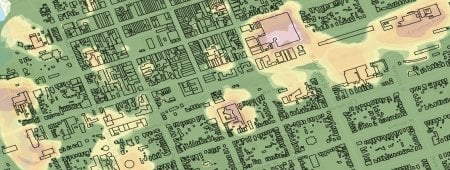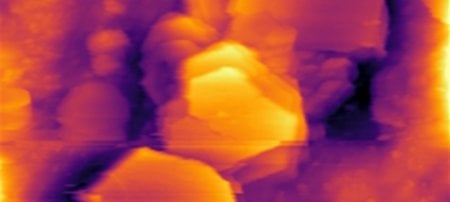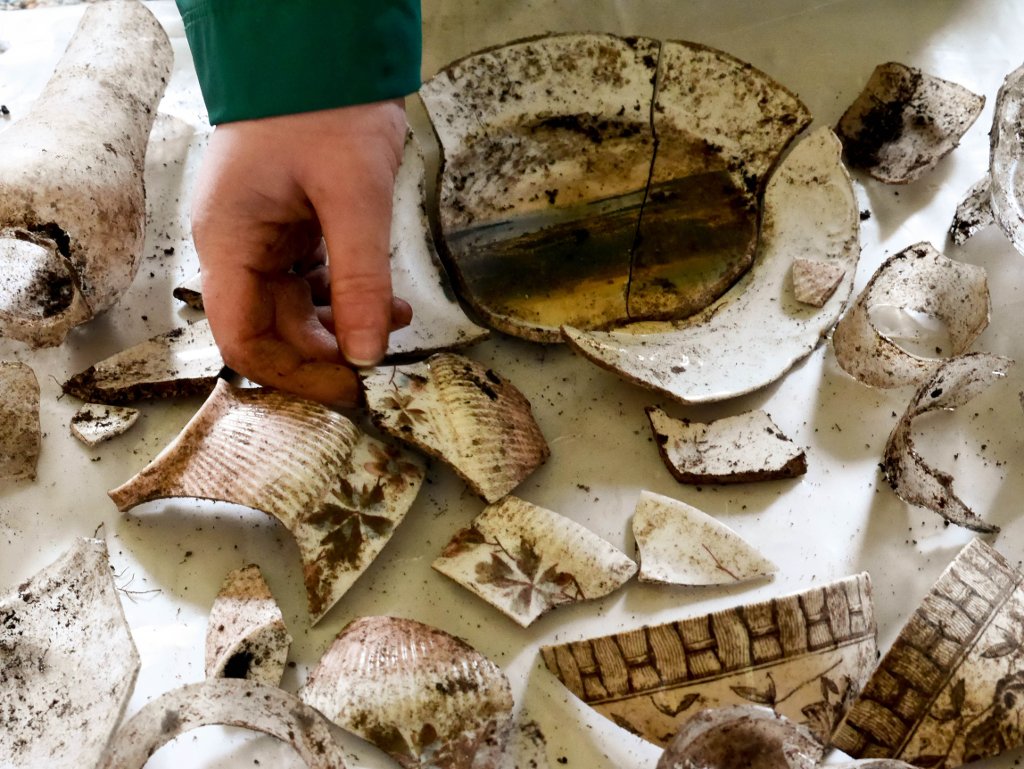Archaeologist, Chemical Engineer Unite in a War on Rust
Industrial archaeology studies the past and seeks to enshrine it as heritage. In that undertaking, archaeologist Tim Scarlett, of Michigan Technological University’s Department of Social Sciences, has his eyes focused far into the future: he wants an ironclad way to preserve artifacts in order “to curate into perpetuity.”
Scarlett’s world is filled with discarded items on industrial sites, where he unearths iron: nails, forge and blacksmith wastes, tools, and scrap iron—all artifacts whose very nature is to corrode and break down, a process that spells ruin for preservationists.
Scarlett and chemical engineering professor Gerard Caneba have received $25,000 from the National Park Service to research methods to combat rust, which is iron’s ill fortune.
“Iron is unhappy to be alone,” Scarlett says. “It’s unstable. It’s much happier when combined with other atoms in chemical compounds. It particularly likes to bond with oxygen.” Under the influence of oxygen, iron becomes ferric oxide or ferrous hydroxide—what we know as rust or corrosion.
Given sufficient time, oxygen and water, any iron mass will eventually degrade and convert entirely to rust. Acids and salts in moist soil accelerate the process.
Currently, corrosion impedes efforts to preserve cast iron material. Put partly corroded nails in a zip-lock bag, store them awhile, open the bag years later, and end find “lumps of rust powder,” Scarlett says. He wants to curtail that natural process. “Stopping corrosion is paramount,” he says. “We want to preserve every little bit of data and artifacts in the long term.”
This is more challenging than it seems, Scarlett adds, because museum curators are a fussy bunch. “Imagine a client who wants you to take their rusty products and stop them from corroding any further—but you can’t change the material structure, the chemical properties, or the appearance. And your treatment can’t degrade over time, must be inexpensive, quick, and safe. Oh, yes, and it should be reversible so we can undo whatever we do now. Museums are full of materials that were ‘cleaned’ and ‘repaired’ using new tools and processes that failed decades or centuries later. Ethical conservation is like medicine. ‘Do no harm’ is the first principle.”
Current remedies to combat corrosion are low-tech, slow and problematic. They include baking the artifact to dry it out, which often doesn’t reach the moisture in small fissures and pores; and electrolysis—removing corrosion layers while applying a plating, similar to chrome on steel, which Scarlett says is intrusive and impractical. “It’s like amputating an arm for a hangnail,” he says. “It’s too much treatment, especially for delicate objects.”
So Scarlett is teaming up with Caneba, the director of Tech’s Center for Environmentally Benign Functional Materials, to investigate two new methods to combat rust: using highly pressurized carbon dioxide to displace water in pores and fissures, which should discourage iron artifacts from degrading, and impregnating the objects with a coating of benign polymers that would prevent the absorption of water.
The National Center for Preservation Technology and Training, a unit of the National Park Service, is supporting this one-year project. Scarlett and Caneba will build on it by involving a broader, collaborative team of Tech faculty that will seek more funding to implement full-scale work at an industrial heritage site. Meanwhile, the two researchers will challenge students to design treatments for objects as small as a chisel and as large as a mine hoist.
Scarlett has been at Tech since 2001. He teaches people about artifacts, buildings, or sites. “Something in human culture makes us interested in the past,” he says. “We have intense interest in history and archaeology. They can make us who we are, so they are important to understand and preserve. The past informs the future.”
Michigan Technological University is a public research university founded in 1885 in Houghton, Michigan, and is home to more than 7,000 students from 55 countries around the world. Consistently ranked among the best universities in the country for return on investment, Michigan’s flagship technological university offers more than 120 undergraduate and graduate degree programs in science and technology, engineering, computing, forestry, business and economics, health professions, humanities, mathematics, social sciences, and the arts. The rural campus is situated just miles from Lake Superior in Michigan's Upper Peninsula, offering year-round opportunities for outdoor adventure.




Comments